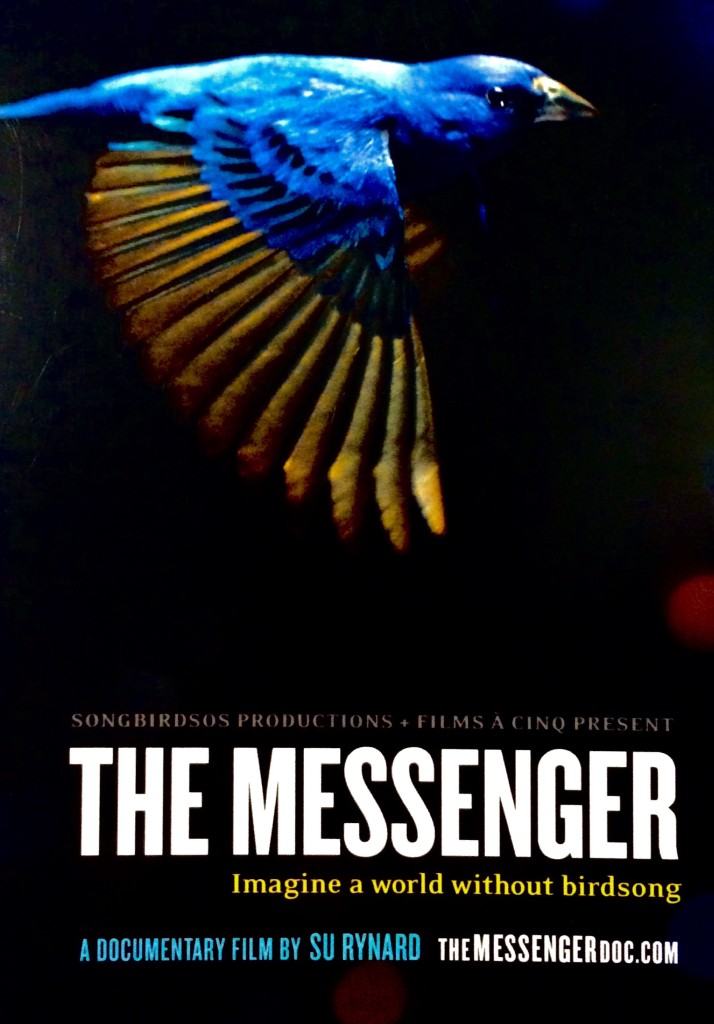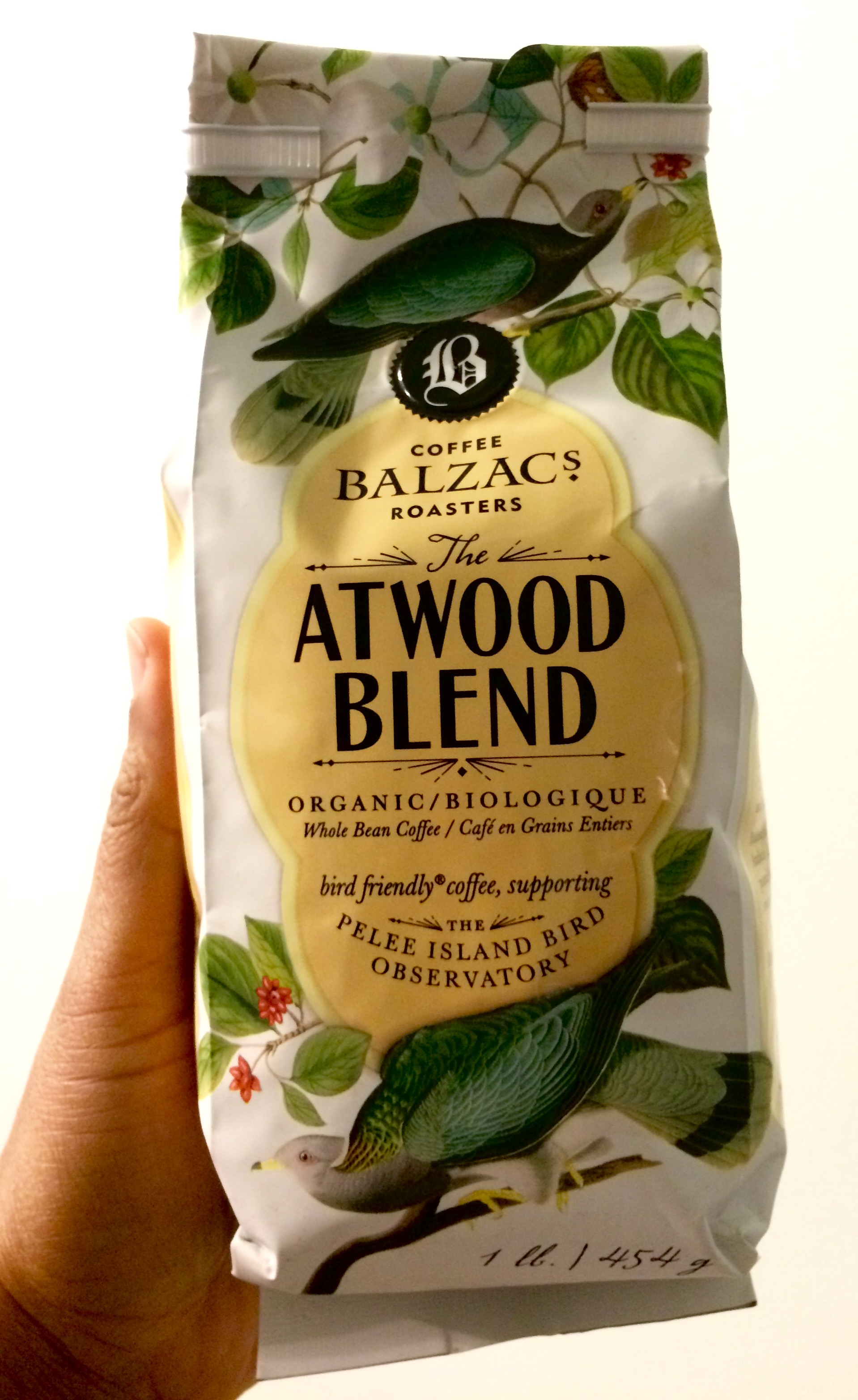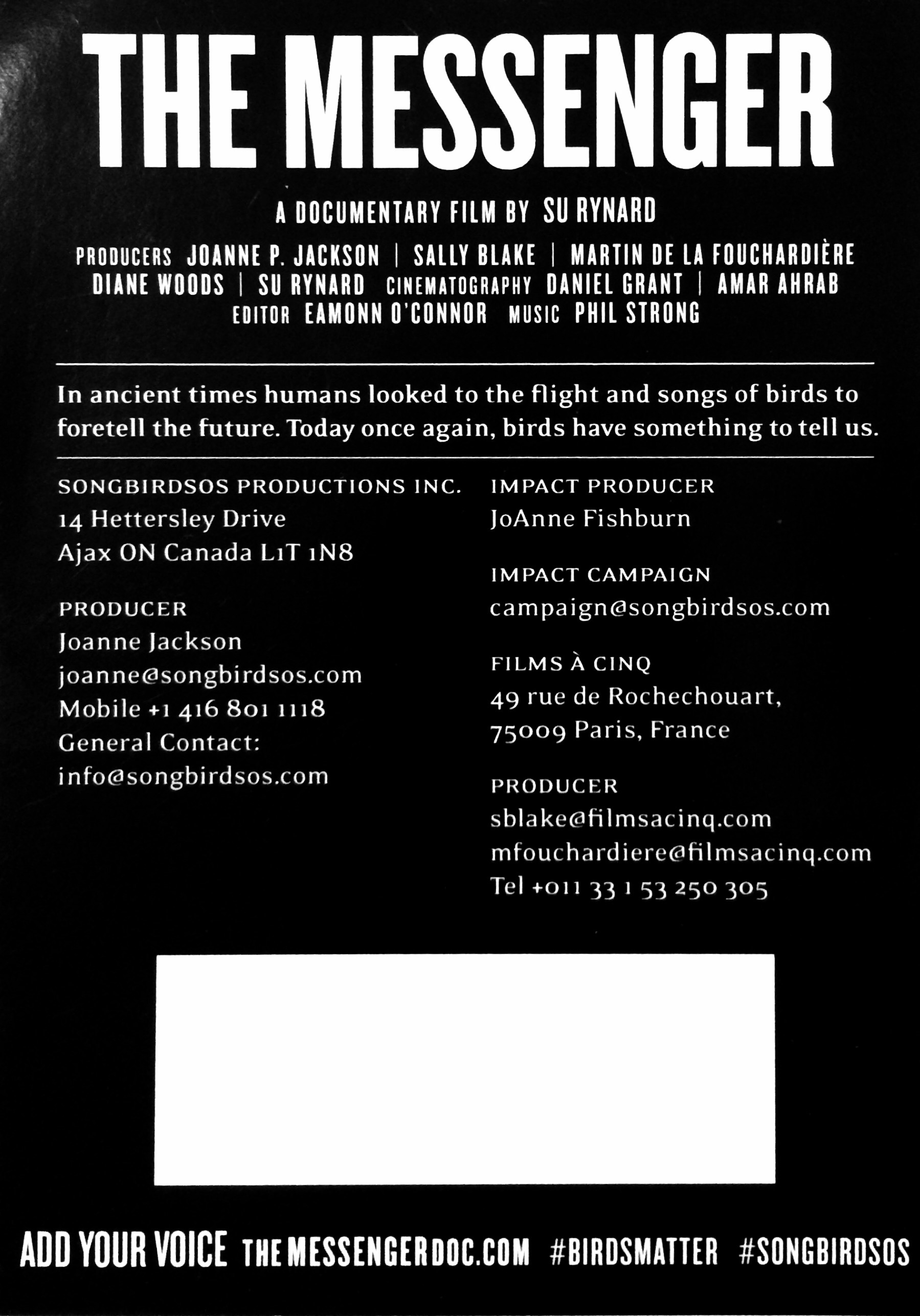One of the beautiful things about summer is waking up to bird song; the trilling chorus outside my window as the rising sun paints everything rosy and gold. It’s winter now. The mornings are pretty quiet. There’s no choir of birdsong.
But if you live where songbirds migrate, their disappearance and reappearance are just part of the natural cycles. We’re always pleased when birds begin to arrive from their overwintering homes. I know I am. But what if the birds never came back? What if the birdsong stopped?
Su Rynard‘s film The Messenger addresses these question. I had a chance to view the documentary at the Guelph Film Festival this past November.
The Film
“We’re in a very precarious ecological moment; not just for birds.”
– Su Rynard, Director of The Messenger
The Messenger starts off with footage of songbirds flying in the dark. Their bodies were half-obscured in shadow with flashes of vibrant blue or yellow against a black backdrop. Their wing beats were at a glacial pace compared to what we’re used to seeing when birds are in flight.
The documentary highlights the plight of migratory songbirds worldwide. The birds are experiencing an onslaught of stressors at every turn. Clean, shiny windows of city skyscrapers can deceive flying birds leading to fatal collisions. Habitat destruction and fragmentation in their breeding sites. Industrial noise drowns out their song. Climate change. Cats. And those stressors are just what occur in their breeding grounds. Partner all of this with habitat loss at their overwinter sites and the struggles they face during migration and we have a pretty grim picture.
Rynard describes all of these factors and more with the gorgeous cinematography of both the birds and the scientists who study them and their threats. She blends her filming with other rare footage: the illegal indulgence of French ortolan bunting, the chasing of sparrows in China, night-vision footage of cats raiding nests.
The film was worrying in the way that most documentaries about human impacts on the natural world are. Afterwards, there was a Q&A session about the making of the film and Rynard’s thoughts on the issue. She was joined by Jody Allair a biologist and science educator from Bird Studies Canada.

The making of the film
“I know about this [songbird population decline] but what can I do? I could volunteer… Actually, I’m a film-maker so I should probably make a film”
– Su Rynard, describing her impetus for making the film
It was fascinating to hear Rynard talk about the making of the movie. She discussed how the film changed her personally, the challenge of gaining the trust of hunters and activists, and how she got some of her footage.
It took five years to film The Messenger, and it spans countries around the globe. What I found fascinating was that the flying birds in the opening sequence were NOT CGI, though the improbability of the scene made it seem that way. Rynard took three years to get that footage alone.
The birds mid-flight were filmed at the Advanced Facility for Avian Research (AFAR) at the University of Western Ontario. AFAR has a wind tunnel that they use to study birds in flight. Getting the footage began with a test shoot with slow motion cameras as a proof of concept. The filming was done in total darkness because the birds migrate at night. The researchers at AFAR approved the filming and then there was the process of getting permits, auditioning birds and releasing them successfully.
The complex challenge of conservation
There was a scene that truly highlighted the number of bird deaths we’re talking about. Fatal Light Awareness Program (FLAP) monitors bird-window collisions by collecting the dead and rehabilitating the injured. It’s staggering to see how many victims they collect in a short period of time. Bags and bags of birds who died from window collisions alone. The birds were laid out like macabre jewels. Blues, yellows, golds, browns, and reds. Their small bodies grouped by species and piled together.
This film focused heavily on neotropical migrants, but according to The State of Canada’s Birds Report 2012, birds of almost all kinds are suffering declines in Canada. That is, except for waterfowl and raptors. According to Jody Allair (Bird Studies Canada), a lot of politics and money is involved in the protection and conservation of these groups of birds which demonstrates that “throwing a lot of money at something” can help.

But, grassland birds are declining, and arctic-nesting shorebirds are projected to go extinct. Aerial insectivores are another group of birds that are suffering heavily, partially due to pesticide use. Neonicotinoids are a class of pesticides in widespread use, and Allair described them as the “DDT crisis of our generation”. Fortunately, these particular chemicals are in a decline, but we can only hope that what we use next isn’t worse.
Even if new pesticides are used, pesticides are not the only factors. The reality is that the issue is monumentally complex. The birds are facing challenges where they breed, while they migrate and where they overwinter. It’s never just one thing. Pesticides combine with habitat loss and fragmentation, climate change, light pollution. The list of anthropogenic stressors goes on and on.
“Conservation, in general, works. It’s really important to become engaged in anyway that you can. It isn’t helpful to feel defeated.”
-Su Rynard
What are some things you can do to help?
- Get to know your birds. There are plenty of books and online resources to help you learn your native birds. There are also apps that can assist you in tracking bird migration as it’s happening.
- Keep your cats indoors. Domestic cats kill over a billion birds a year. They are invasive species, and the birds have little no defense against them.
- Purchase bird-friendly coffee. The Smithsonian Migratory Centre Bird Friendly certification encourages neotropical farmers to create bird-friendly habitats in their coffee plantations.

Pictured above is one brand with Bird Friendly certification from the Smithsonian Museum. The coffee’s pretty tasty.
- Make your windows visible to birds. Millions of birds die from colliding with windows both by day and night. Fatal Light Awareness Program (FLAP) based out of Toronto is an excellent resource for helping you make sure your windows are visible to birds at all times.
- Visit Songbirdsos.com for more tips on how to help.
“This can be something to be very pessimistic about. There’s so much going on. But hopefully this is awareness. Hopefully you’ve learned about all of these different factors and you can go out and make positive steps and start making a difference.”
-Jody Allair, Bird Studies Canada

I highly recommend watching The Messenger. Unfortunately, there are some problems with distribution. One member of the audience commented that the movie should be viewed in high schools, and Rynard pointed out that the current film distribution system favours the big name studios. Fortunately, they do have traction in the U.S. so that will help. You can check out their website to find out information about upcoming showings or even host your own screening. Rynard also mentioned that they have a deal with U.S. Netflix so it may be available through that avenue soon.
Cheers,


No Comments